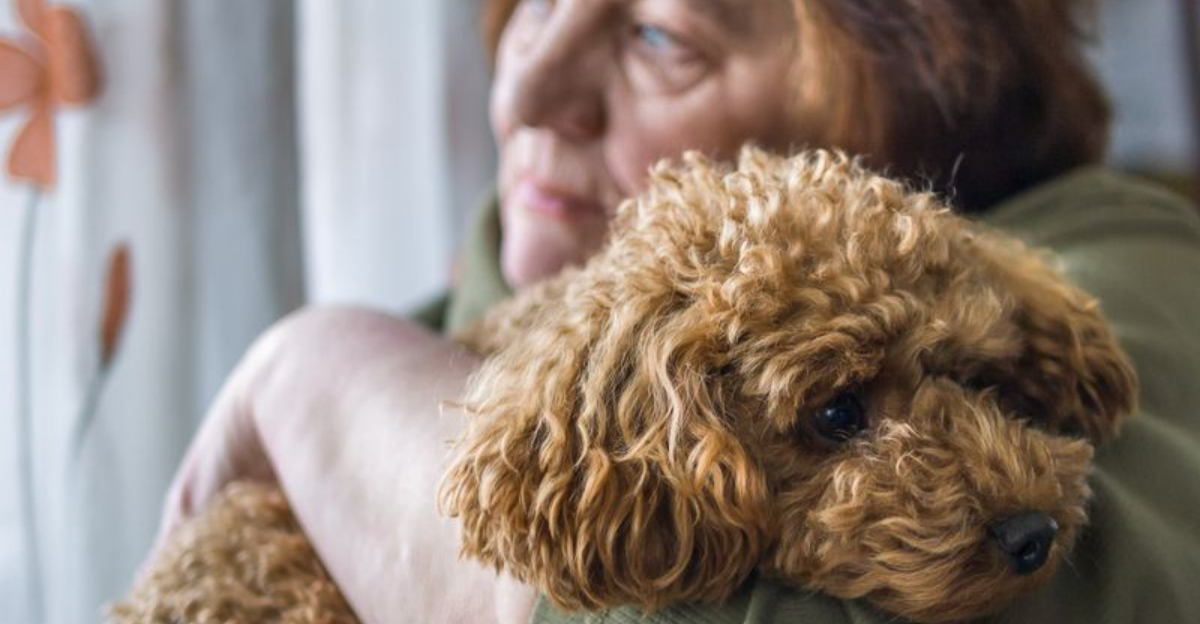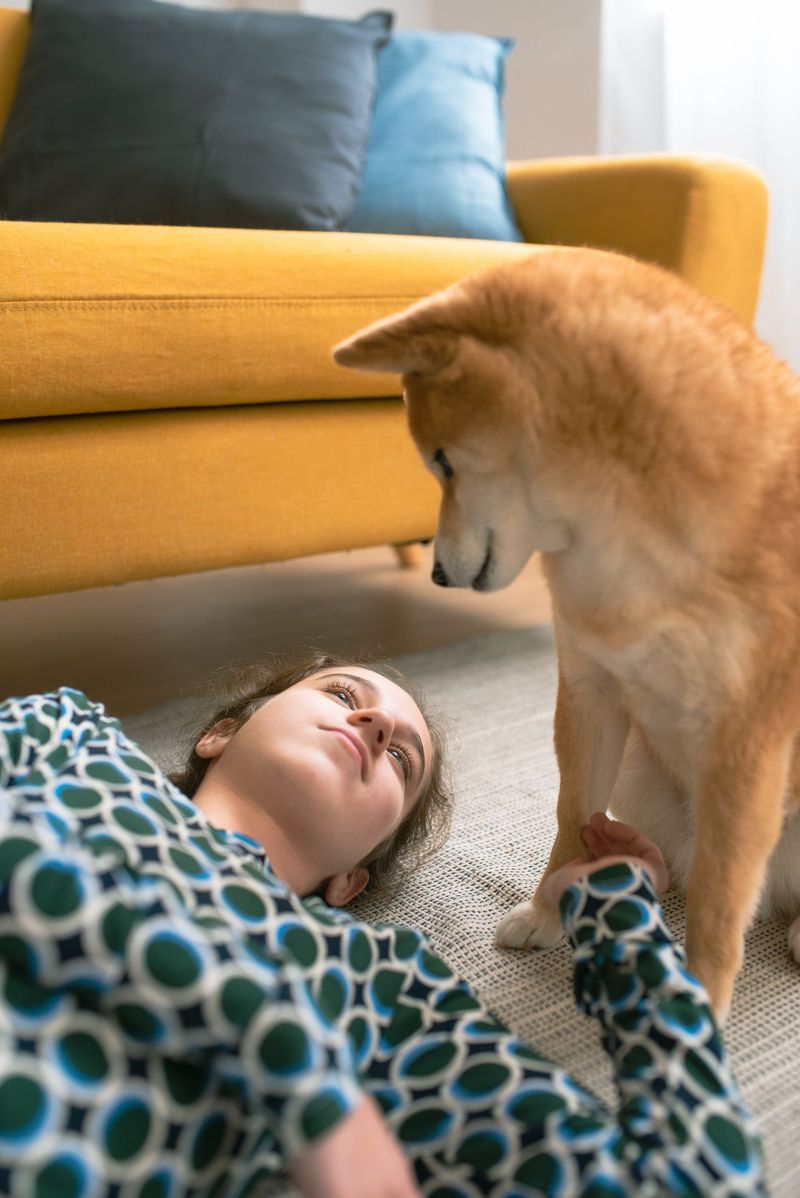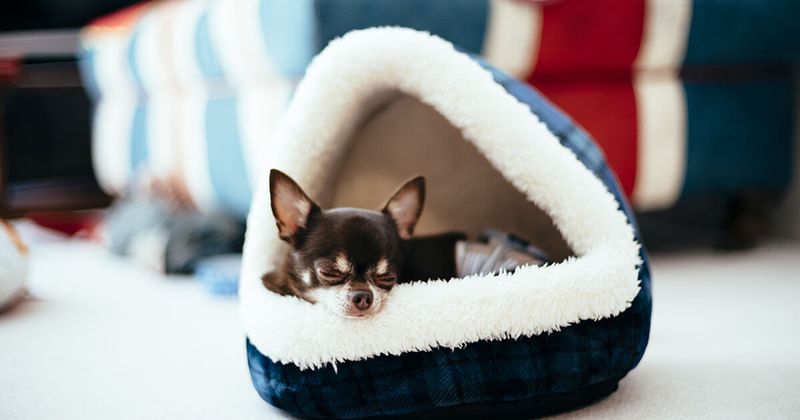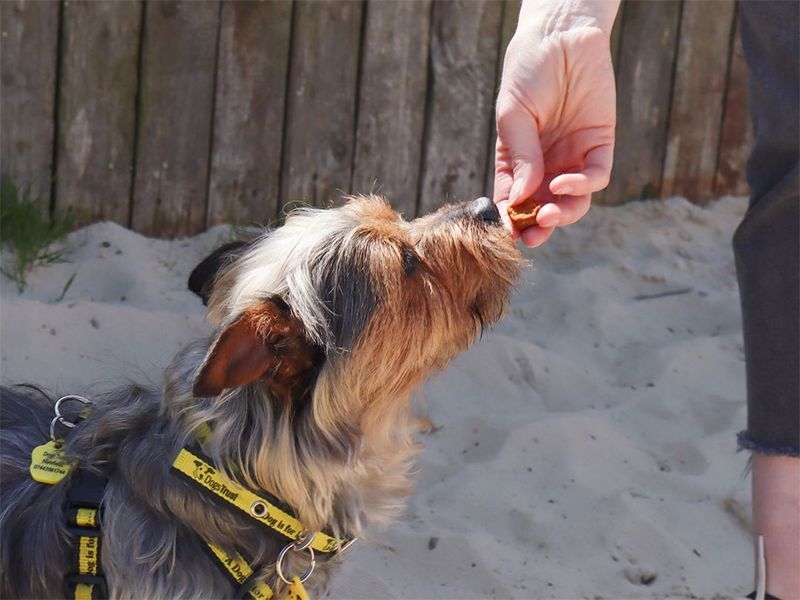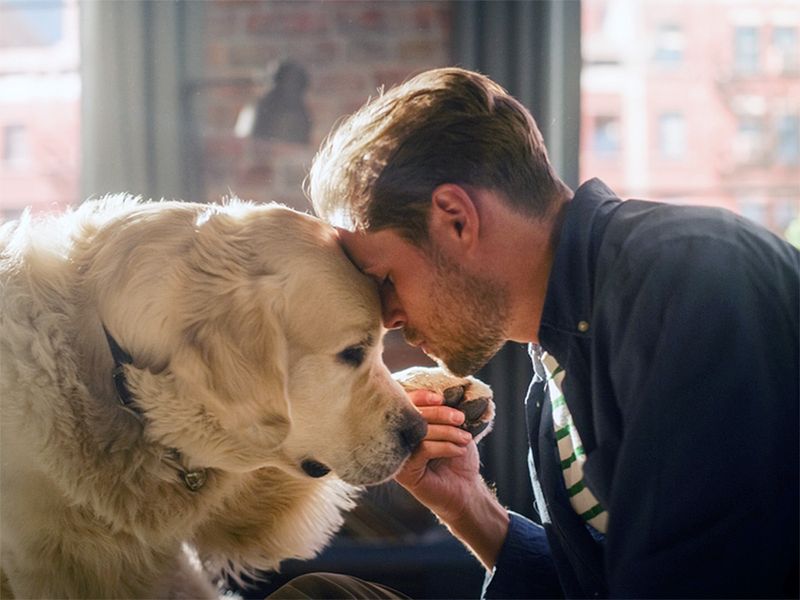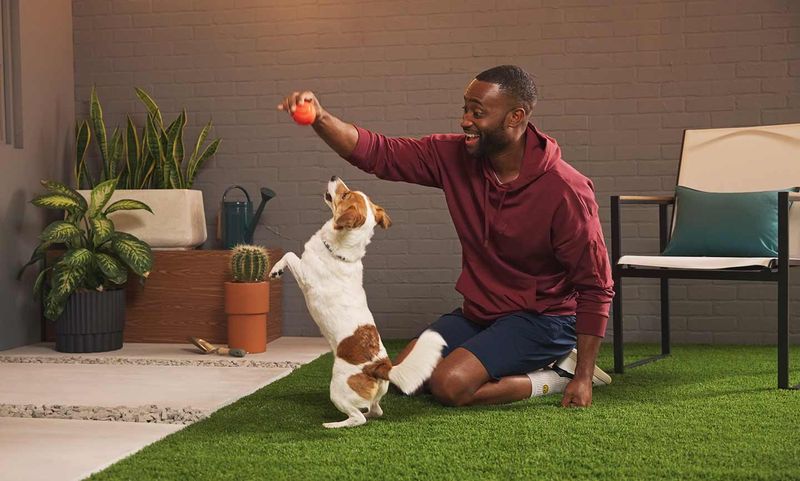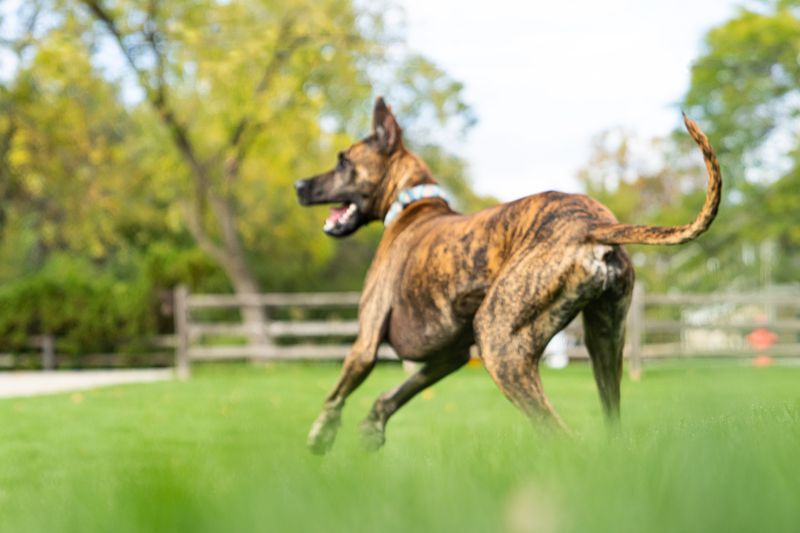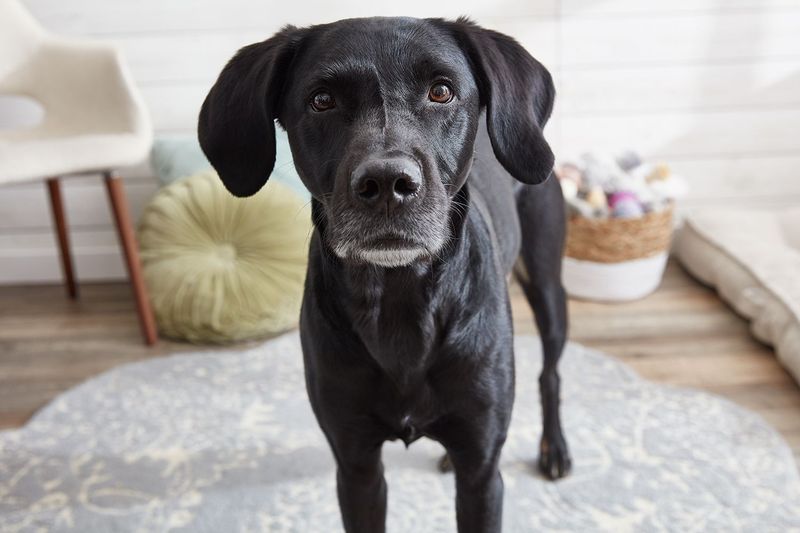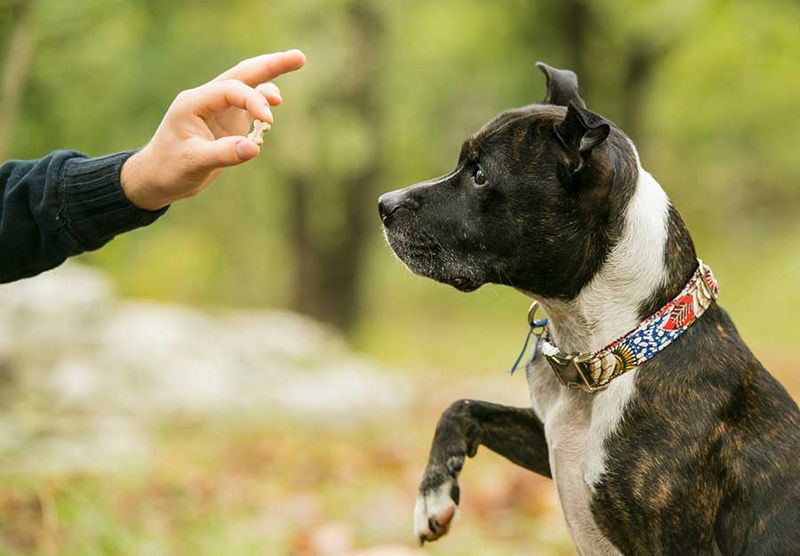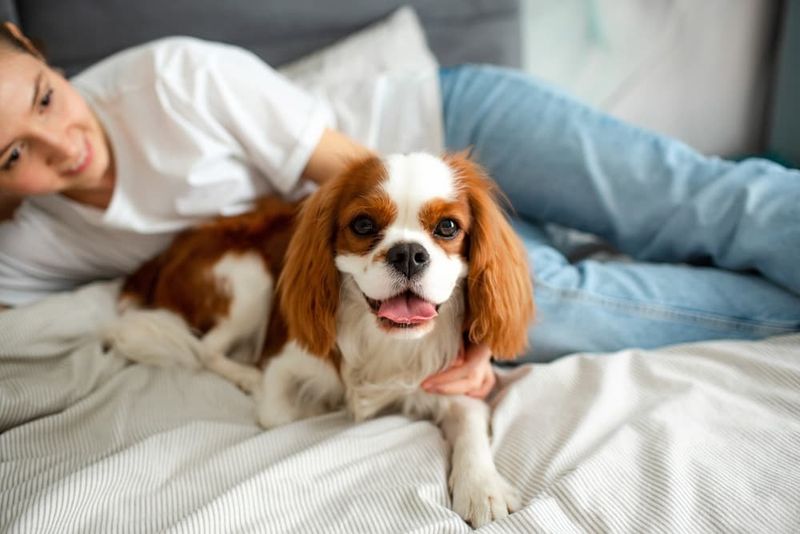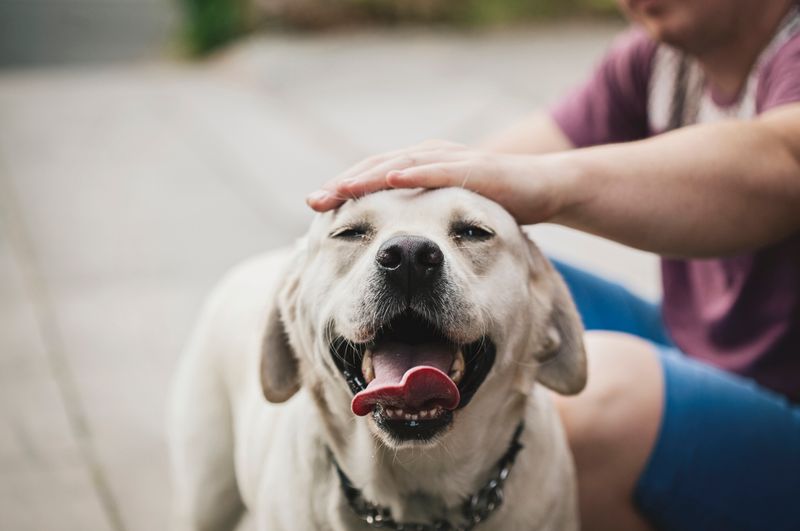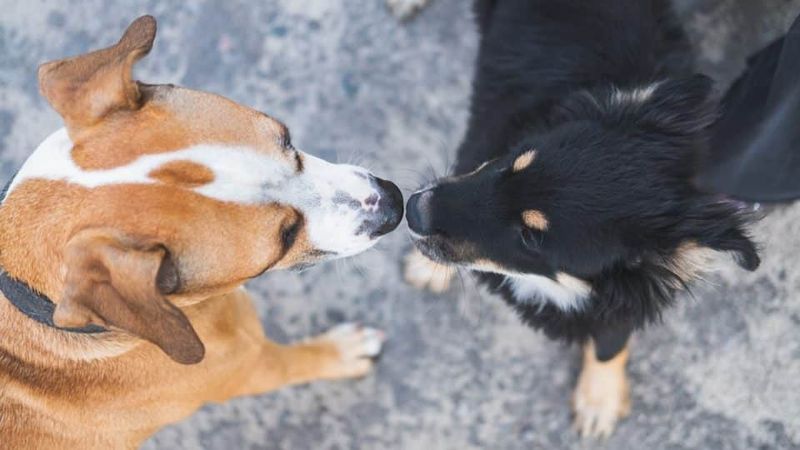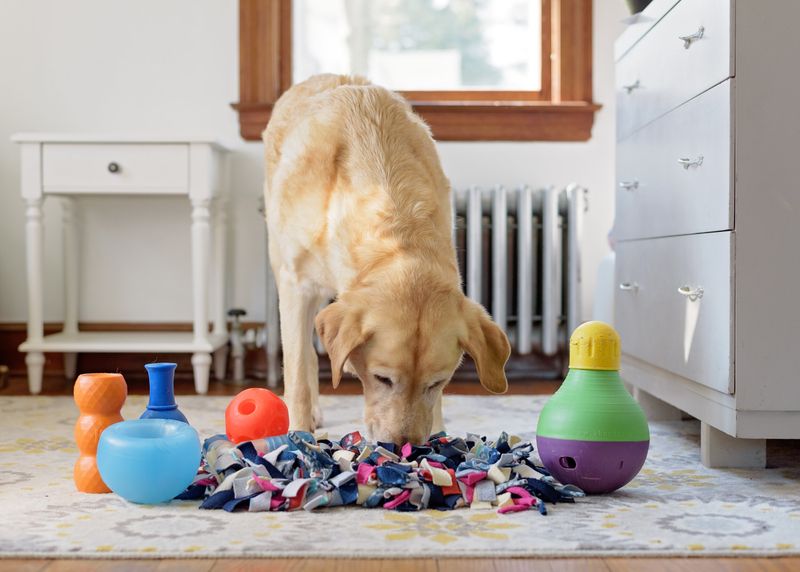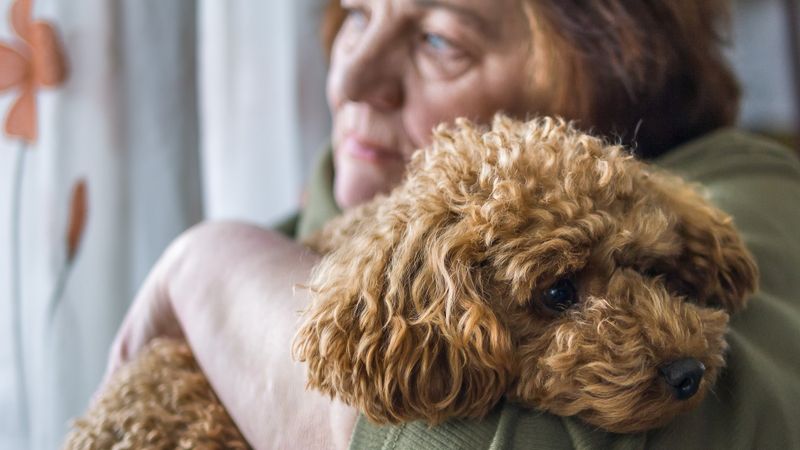Building a bond with a dog requires understanding and patience. By incorporating subtle techniques backed by experts, you can make a dog trust you more quickly. These methods focus on body language, environment, and understanding a dog’s needs. Here are 15 proven ways to gain a dog’s trust and form a lifelong friendship.
Soft Eye Contact
Ever noticed how dogs seem to communicate with their eyes? Making soft eye contact is a gentle way to tell a dog, “I see you, and I mean no harm.” Avoid staring, as it can be perceived as a threat. Instead, let your gaze be soft and warm. When you meet a dog, try blinking slowly. This mimics a dog’s way of saying they trust you. Soft eye contact can help bridge the gap between human and canine, fostering a connection based on mutual respect. It’s a simple yet effective gesture that speaks volumes in the world of dog communication.
Offer a Safe Space
Creating a sanctuary for a dog is paramount. Dogs, much like us, need a space where they feel safe and secure. Set up a special corner with a soft bed or blanket, away from loud noises and disturbances. This dedicated spot offers them solace. Over time, they will associate this area with comfort and safety. Imagine having a place where you can always find peace; that’s what you’re offering the dog. This simple act can significantly enhance their trust in you, knowing that you respect their need for calm and personal space.
Reward-Based Training
Training with rewards is like speaking a language that dogs naturally understand. By using treats, praise, or even toys, you’re telling them they’re doing something right. Dogs thrive on positive reinforcement, and it builds their confidence. When a dog associates you with rewards, they view you as a friend and leader. This approach encourages mutual respect and trust. Imagine the joy of your dog eagerly awaiting your next instruction, knowing it leads to a pleasant outcome. It’s a win-win strategy that deepens your connection.
Gentle Vocal Tone
Your voice is a powerful tool in communicating with a dog. A gentle, soothing tone can be incredibly reassuring. Dogs are sensitive to the nuances in our voices, and a calm tone can ease their anxiety. Try using a soft voice when giving commands or simply when speaking to your dog. This not only helps in training but also in creating a peaceful environment. Imagine the comfort of listening to a lullaby; that’s what your gentle voice can be for your dog. It’s all about conveying love and safety through sound.
Respect Personal Space
Respecting a dog’s personal space is crucial for trust-building. Dogs, like humans, have boundaries. Approaching a dog too quickly or when they’re resting can make them uneasy. Allow the dog to come to you at their own pace. This shows them that you understand and respect their comfort zone. Think of it as giving someone the space to breathe and come to you when they’re ready. This patience can lead to a deeper, more trusting relationship, built on understanding and respect for each other’s boundaries.
Playtime Interaction
Playtime isn’t just about fun; it’s a bonding exercise that strengthens trust. Engaging in activities like fetch or tug-of-war allows a dog to connect with you on a joyful level. During play, dogs feel free and happy, which is conducive to building a positive association with you. It’s not just about the activity but the shared experience. Think of playtime as laughter between friends; it builds memories and solidifies bonds. This joyful interaction is a cornerstone of trust and companionship between you and your dog.
Consistent Routine
Consistency is the bedrock of trust. Dogs thrive on routine, much like how we feel settled when we know what to expect. Establishing a daily routine for feeding, walking, and play reassures your dog. A predictable schedule makes them feel secure and reduces anxiety. Over time, they learn to rely on you and trust your care. Imagine waking up every day knowing exactly what’s coming next; it’s comforting and builds confidence. This predictability is a subtle yet profound way to nurture trust with your furry friend.
Understanding Body Language
Dogs communicate a lot through their body language. Understanding these cues can significantly enhance your relationship. Whether it’s a wagging tail, a lowered head, or perked ears, each signal tells a story. By responding appropriately to these cues, you show a dog that you understand them, which builds trust. Consider it akin to learning a new language; once you’re fluent, conversations flow easily. This skill allows you to cater to their needs and reassure them in a way they inherently understand.
Patience with Progress
Patience is a virtue, especially when building trust with dogs. Progress can be slow, and each dog learns at their own pace. Celebrate small successes and remain calm during setbacks. Dogs sense frustration, so it’s essential to maintain a positive demeanor. This patience teaches them that learning is a safe and rewarding process. Think of it as nurturing a garden; it takes time, but the blooms are worth the wait. This gentle persistence fosters a trusting and loving relationship, where the journey is as rewarding as the destination.
Calm Demeanor
Dogs are incredibly perceptive to our emotions. By maintaining a calm demeanor, you create a peaceful atmosphere that dogs find comforting. Stress and excitement can agitate them, while calmness encourages relaxation. When you exude calm energy, dogs mirror that tranquility, leading to a more harmonious relationship. It’s like being a gentle breeze on a warm day, soothing and reassuring. This sense of calm can transform your interactions, making your presence a source of comfort and safety for your dog, enhancing trust and affection.
Gentle Physical Touch
Physical touch can bridge the gap between you and a dog. Gentle strokes on their back or a soft scratch behind the ears can be incredibly soothing. Every dog has their preference, so observing their reactions can guide your approach. This gentle touch conveys affection and security, deepening trust. Imagine the comfort of a warm hug; that’s what your touch can mean to a dog. It’s about communicating love through your fingertips, reinforcing your bond with every gentle pat or scratch.
Recognizing Stress Signals
Recognizing stress signals in dogs is crucial for their well-being. Dogs express stress through behaviors like panting, pacing, or yawning excessively. By identifying these signs, you can remove them from stressful situations, showing that you care about their comfort. This recognition fosters trust as they learn you comprehend their feelings. Think of it as having someone who truly listens to you; it builds a solid foundation of trust. This empathetic understanding is key to maintaining a harmonious and supportive relationship with your dog.
Positive Socialization
Socialization is pivotal in a dog’s development. Introducing them to new environments and other dogs helps them become well-adjusted. Positively guiding these experiences builds their confidence and trust. Each new interaction is a learning opportunity, and your presence is their anchor. Ensuring these moments are positive assures them that the world is a friendly place. Imagine meeting new friends in a welcoming setting; it’s comforting and encourages exploration. This kind of socialization enriches your dog’s life and strengthens your mutual trust and bond.
Providing Enrichment
Enrichment activities stimulate a dog’s mind and keep them engaged. Providing toys, puzzles, or new scents to explore can be highly beneficial. These activities prevent boredom and foster a positive association with you as the provider of fun and stimulation. It’s akin to solving a puzzle together, increasing engagement and joy. This mental stimulation plays a crucial role in building trust, showing them their needs are met and encouraging a deeper connection. Enrichment is not just play; it’s a vital part of nurturing a trusting relationship.
Predictable Responses
Predictability in your responses helps dogs feel secure. Knowing how you’ll react in different situations builds their confidence. When a dog understands your reactions, it reduces their anxiety and increases their trust in you. It’s about being a steady presence in their lives. Think of it as reading a familiar book; it’s comforting and reassuring. This consistency and predictability assure your dog of their place in your life, creating a strong bond built on trust and understanding.
